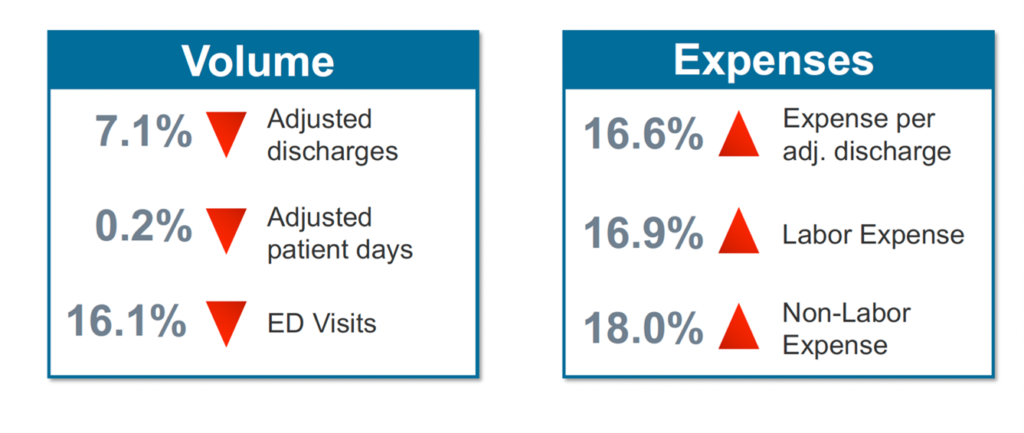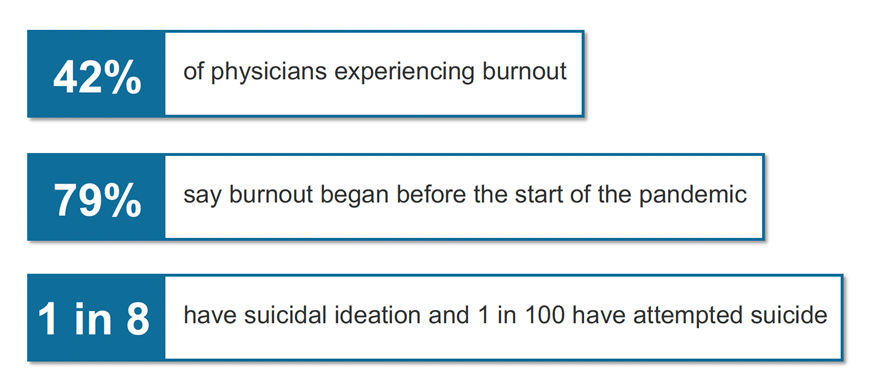Playing to Win in 2022 in Healthcare Finance: How to Tackle Lower Volumes, Higher Costs, and Big Competition
Playing to Win in 2022 in Healthcare Finance: How to Tackle Lower Volumes, Higher Costs, and Big Competition
Regardless of COVID-19 vaccine efficacy and how long it takes risk levels to fall into less threatening ranges, many effects of the pandemic are here to stay. One area that will remain fundamentally altered is the business of delivering healthcare—the strategies and ins and outs of healthcare finance. COVID-19 has fueled new delivery models and new competition, as patients and clinicians are drawn to more convenient, less costly care (e.g., virtual care) and less stressful, more productive work environments.
So, how can traditional providers adapt and thrive in this new healthcare landscape? They must start by recognizing the impending challenge as a business problem, not a technology or care problem. This means leveraging their CFOs and financial leaders to play a more collaborative role in empowering clinicians to make better decisions and operationalizing health systems’ key differentiator—data.
Jump to:
The question isn’t if COVID-19 will permanently alter the healthcare financial outlook—but how. Pandemic-fueled financial headwinds range from new competitors—including vertically integrated insurers, innovative care delivery providers, and large corporations (e.g., Amazon and Walmart)—to physician-hiring battles and more. These large healthcare ecosystems and new innovative models are growing faster than providers, driving a fundamental shift in the business landscape and putting health systems on the defensive.
As these new competitors target provider revenue, U.S. healthcare must face the impending challenge as a business problem—not a technology or care problem. This business-focused landscape will propel CFOs and other finance leaders to play a larger, more collaborative role in empowering physicians to deliver better care and operationalize previously underutilized or unrealized assets and advantages.
Providers today must shift their tactics from playing defense to playing to win. Making this transition requires healthcare leaders to understand the changing competitive landscape and define new roles and skills for their finance leaders and teams.
The Healthcare Financial Outlook: Uncomfortable Trends Are Pushing Provider Transformation
COVID-19 is driving fundamental shifts in healthcare finance, leaving many health systems unsustainable. Volumes, including adjusted discharge and patient days and emergency department visits, have dropped, while expenses, including per adjusted discharge, labor, and non-labor rise (Figure 1).

Meanwhile, new well-funded and consumer-centric entities in the healthcare space, such as the vertically integrated systems, new busines models, and large retail corporations mentioned above, are succeeding where the relatively small health systems are falling behind. Giants from other industries—the likes of Walmart, Amazon, and more—are dwarfing traditional health systems.
Competition Is About More than Patients—It’s Also About Clinicians
New entrants to the healthcare space attract more patients for many reasons, from cost to convenience. However, the competition isn’t just about patients—it’s also about clinicians. While clinicians at traditional systems report dissatisfaction and distress, including unacceptable levels of burnout (42 percent), burnout starting before the pandemic (79 percent), and suicidal ideation (one in eight), too many health systems aren’t taking action to improve the team member experience (Figure 2).

Innovators, on the other hand, are reinventing how they treat clinicians; they’re responding to the largely preventable contributors to burnout and poor experience, attracting clinicians from health systems to these new entities. Disruptive care delivery companies are addressing clinician concerns and well-being by aiming to reduce stress and administrative burden and increase support and flexibility. For example, one such innovator, ChenMed, promotes a practice model with the following vows:
- “Healthcare reimagined for you and your patients.”
- “Fewer patients, more time for everyone.”
- “Empowering physicians to deliver better outcomes.”
Healthcare Providers Must Prioritize a Business Solution
With decreasing volume, increasing cost, and a rise in competitors, health systems must prioritize business to play to win in today’s landscape. More than technology or care, misaligned incentives and antiquated leadership styles, especially regarding CFOs, are relegating health systems to defensive, rather than competitive, roles.
Health systems traditionally silo their CFOs, keeping them inaccessible to clinicians and preventing collaboration. In COVID-19’s wake, however, mounting and shifting financial challenges require providers to view CFOs as part of clinical and operational team—as allies, not adversaries.
To shift to a collaborative role and support clinicians to deliver the best care, finance must develop the following new skills:
- Understand clinical and business operations—including what these teams do daily.
- Understand healthcare costs and methodologies at the patient level—finance must understand cost to reduce cost.
- Develop expertise in various economic models—it’s not just a fee-for-service world anymore, and playing to win means understanding innovative models, how to apply them, and how they impact overall business.
- Leverage effectively analytics, statistics, and data science—finance needs the analytic skills to shift through the data “noise” and recognize real problems.
- Invest in technology to empower finance teams to do data science—such as augmented intelligence and self-service analytics.
Health Systems Still Have a Superpower: Data
While there’s a lot stacked up against provider networks in the pandemic-driven new healthcare landscape, health systems have a unique superpower—data. Despite innovation and big-industry competition, data remains key to intelligent healthcare decision making and risk reduction.
With decades of cost and clinical data, health systems have significantly more of this mission-critical asset than the new competitors. These high-value data stores include patient satisfaction, revenue (more than just claims spend), geospatial, market, and social determinants (SDOH) of health and contain game-changing insights into business and clinical operations (Figure 3).

Data is providers’ key differentiator on healthcare’s new playing finance field and under its new rules. To play to win, health systems must continue to acquire and manage data and nurture data leadership and skillsets. This winning strategy will enable providers to make competitive changes and partnerships, including vertical integration, national remote patient monitoring, provider-sponsored health plans, and innovative care delivery.
Playing to Win: A Healthcare Financial Strategy for a New Era
With decades of deep data (e.g., clinical, cost, claims, and SDOH), traditional healthcare organizations have a strong advantage over their new competitors—but only if they use that data to make more strategic financial decisions. A successful strategy for the new healthcare business landscape will require understanding the evolving competition, as big corporations, insurers, and innovative care delivery will continue to take market share. Providers also must break down silos between finance and clinicians and operators, enabling collaboration across enterprises so that comprehensive data drives all decision making. By taking this business-centric, data-first approach, providers are ready to play to win with today’s healthcare financial outlook.
Additional Reading
Would you like to learn more about this topic? Here are some articles we suggest:
- Six Strategies to Navigate COVID-19 Financial Recovery for Health Systems
- Own Your Value-Based Care Future with the Health Catalyst Value Optimizer™ Solution
- Health Systems Share COVID-19 Financial Recovery Strategies in First Client Huddle
- 2021 Healthcare Trends: What Leaders Need to Know from COVID-19 to New Administration Policies
- From Volume to Value: 10 Essential Strategies for Navigating the Healthcare Shift
This website stores data such as cookies to enable essential site functionality, as well as marketing, personalization, and analytics. By remaining on this website you indicate your consent. For more information please visit our Privacy Policy.
